PG1. What is a Population?
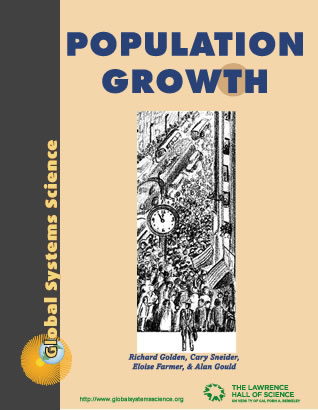
Chapter 1
The word “population” can refer not only to people, but to groups of beetles, or cacti, or even fireflies!
A population is a group of individuals of one species living in an area and occupying a particular ecological niche. This book is about the impacts of populations on their environments and on other populations. It is also about how populations grow, things which limit their growth, what happens to populations when limits to their growth are not present, what has happened to various populations in the past, and what is presently occurring. Key questions in this book concern what could happen to the world in the future as a result of the growth or decline of populations.
I. What Is the Connection Between Robinson Crusoe, Juan Fernandez, and Goats?
Robinson Crusoe is a subtropical island. It appears as an imposing and unexpected structure that raises from the surface of the ocean as you sail towards it. For a sailor like Juan Fernández and his crew coming from the loneliness of an unending sea, their first encounter with this island might have been like they were in an incredible fantasy, like a miracle.
The first documented humans to find Robinson Crusoe Island were the sailor Juan Fernández and his crew, on November 22, 1574. He dedicated the discovery to Spain and named the three major islands Más a Tierra (today known as Robinson Crusoe), Más Afuera (today known as Alejandro Selkirk), and Santa Clara. Acceding to the Spanish Crown’s wishes, Fernández settled the islands bringing 60 Indians, and goats and chickens. After he left there were only sporadic visits of ships and crews, so the goats Juan Fernández had taken to the island in his colonization project multiplied. Diego de Rosales, a Jesuit who came a century later was astonished to see them when he stopped at Robinson Crusoe Island. He stayed at the island for a few days to plant trees and vegetables to help feed the crews of visiting ships.
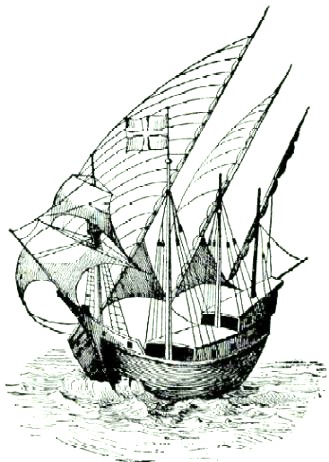
Many sailors, explorers, and pirates often stopped at island Más a Tierra throughout the 17th century. The most famous visit was that of Alexander Selkirk, who decided to abandon his ship, the “Cinque Ports” after a dispute with his captain and stay at Más a Tierra Island.
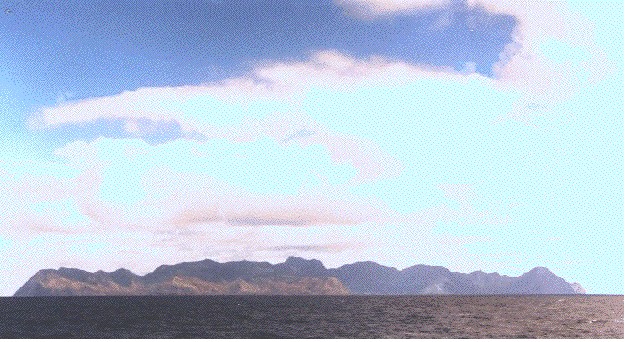
He lived on this island for 4 years and 4 months alone until rescued by a British Ship. Years later, the author Daniel Defoe heard about Alexander Selkirk and the story of his exile on a faraway island and used it as a basis for his character Robinson Crusoe. What follows is the story of Goat Island with a scenario of what it might have been like to be a sailor on the ship commanded by Juan Fernández.
II. The Story of Goat Island
To the lookout at the head of the mast the vast expanse of the Pacific waters stretched endlessly from horizon to horizon. His captain, Juan Fernandes, had warned him that their lives depended on the keenness of his eyesight. It was fifty years before the American revolution that created the United States. The great nations of the world in the early 1700s were England and Spain. Those two countries sent sailing ships across the world’s seas competing for the wealth of unknown lands.
The crewman squinted against the glaring sunlight as the ship rocked lazily on rounded swells. A light wind was slowly moving them westward. The last landfall was two months before and there had been no rainstorms to refill their water casks. Their ration had been reduced to two cups of water a day. A blur of white seemed to hang low off to the northwest. He tried to clear his vision. If it was an English ship it could mean anything from a verbal exchange of insults to an exchange of gunfire and a boarding party. If it was a cloud it could mean rain or an island. Excitedly he called down to the deck.
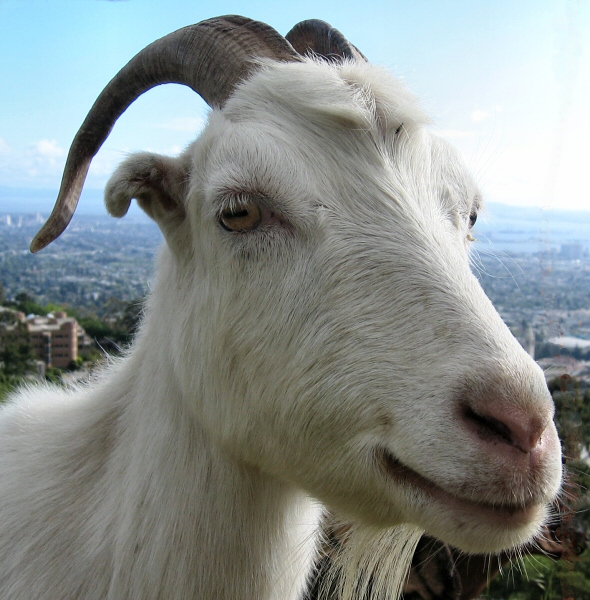
The captain’s telescope revealed a brown smudge under a distant cloud and they changed course to head for what later was called Goat Island.
When the ship of Juan Fernandes sailed up to Goat Island they found, to their relief, that the tiny island had a plentiful supply of water. It was not inhabited by man or beast and there was much fertile pasture. On board his ship the Spanish captain had six goats whose flesh was a reserve of food for his crew. To establish a future food supply he chose to put ashore one male and one female goat. He noted the position of the island and on his return informed his superiors of its existence.
In the next few decades, the island was visited by Spanish sea captains who noted changes on the island. The lush conditions so favored goat life that in the first years their population grew quickly. There were goats feeding in every part of the island. Yet only a few years after that the Spanish captains were disappointed, for they found the goats greatly diminished in number, weak and bony. Yet again, on subsequent visits, their numbers were up and their condition good.
Observant visitors noted that the plant life on which the goats depended likewise waxed and waned. Goat overabundance reduced the limited food supply and then the goat population was decimated by famine. Released from the demands of large numbers of plant destroyers, in only a year or two the plants responded with increased growth only to again suffer destruction at the mouths of the new young goats. Thus did the goat population of “Goat Island” rise and fall and was never permanent. Good times and increase in numbers were inevitably followed by starvation and death.
If ships arrived with starving men aboard when the goat population was up, the goat herd was their salvation. As the ships sailed away, leaving the goat population reduced, the death toll served as a benefit for those remaining. Now the danger of death by famine was staved off. If a goat philosopher could contemplate the departing ships he might console his fellows with the knowledge that the sacrifice of some of their companions was a benefit to the family of goats as a whole.
In the course of time English ship captains found out about Goat Island and also used it as a food reservoir. Too frequently the Spanish would arrive at the island to find the supply of goats so diminished that there were none they could take.

http://www.adopt-a-greyhound.org/treats/body_clipart.htm
Goaded by the evidence that the English had preceded them the Spanish decided to forgo the benefits of the island if they could also deprive the English of them—they delivered to the island one male and one female greyhound, with the following result: Feeding on the plentiful supply of meat of young goats, the dogs increased their numbers prodigiously.
As the Spanish had foreseen, the population of goats was reduced. But the more agile of the goats retreated to the rocky heights of the island where they were safe from the dogs. They descended to the lush valleys only to feed and then retired quickly to safety as the dogs approached. Only the weak and careless became prey.
Likewise the dog population declined. Deprived of an easy source of sustenance only the quickest, strongest and most watchful dogs survived. A new kind of oscillating balance was established on the island wherein a quantity of plants, a number of goats, and a population of dogs continued in good health and in good harmony for many years. This harmony did not, however, extend to native species that existed on the island before the Spaniards and English mariners arrived. They either became extinct or were driven to the brink of extinction.
A number of “Goat Islands” have been created in tropical archipelagos as mariners traveled to them and left their animals behind to breed unchecked by their natural predators.

A modern-day goat island exists in the Galapagos Islands on the Island of Santa Fe. Here the endangered land iguana (Iguanas terrestris) was once described by Charles Darwin in 1845 as so numerous that “we could not for some time find a spot free from their burrows on which to pitch our single tent.”
Since Darwin’s time, they have drastically declined in numbers due to introduced animals, including large herds of goats. The goats feed on all the vegetation, and churn up the resulting barren volcanic soil into a fine choking pumice-like dust. Efforts by Park rangers to keep the goat population under control by shooting them has been unsuccessful.
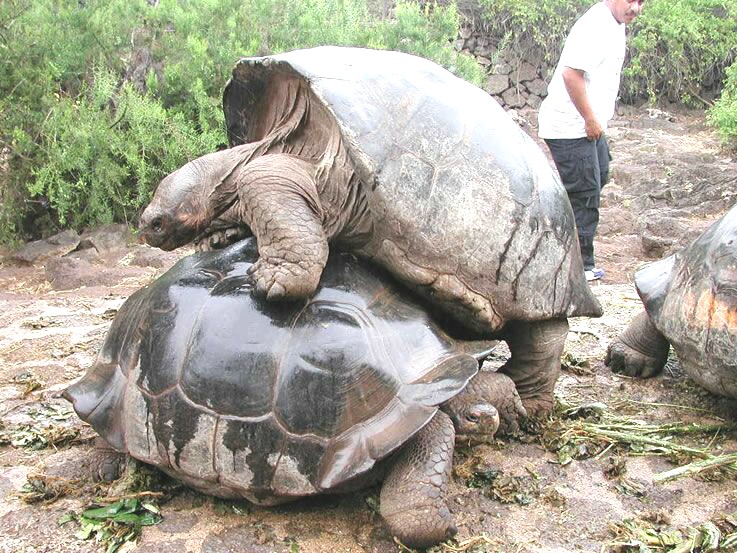
Another animal which suffers from the overpopulation of goats is the rare and endangered giant tortoise. Tortoises also depend on vegetation for their food and compete directly with the goats. As we’ll see in this book, the story of Goat Island is not unique. It is similar in many ways to the story of how any population grows. Populations of rabbits, deer, grasshoppers, and even people, display certain patterns as they grow to fill their natural environment.
The story of Goat Island is based on the writings of Joseph Townsend, born 1739, died 1816 (as reported in Population, Evolution, and Birth Control assembled by Garrett Hardin, W. H. Freeman, 2nd Edition 1969), and on a history of the Juan Fernandez Islands supplied by the Chilean government.

PG1.1. Investigation:
Population Growth Behavior
Conduct an experiment growing live organisms which are much, much smaller than goats. Determine whether or not this population behaves in much the same manner as a population of goats.
Mix 1 ml. of molasses solution prepared for you by your teacher, a pinch of dried yeast, and 9 ml water in a test tube. Grow for 24 hours. Observe and count all yeasts visible in the field of view under a microscope using a drop of yeast culture at 400X magnification. Continue to count cells every few days for 2 weeks. It may be necessary to use serial dilution to make yeasts easier to count. Graph the yeast population growth.
Serial dilution
Serial Dilution may be achieved by diluting cultures before counting them:
Take 1 ml from a parent culture and add it to 9 ml distilled water. After mixing thoroughly, take 1 ml of culture from your diluted tube and add it to a 3rd tube containing 9 ml of distilled water. Mix thoroughly before counting. This gives a total of a 100-fold dilution. (Multiply your counts by 100 to get the original number of organisms).

Observe the appearance of the test tube and odors detected. Graph your yeast counts, and log your observations.
- What has happened to the population of yeasts in the test tube?
- Have the yeasts encountered limiting factors?
- What might they be?
III. Limiting Factors
Limiting factors can be summarized as the conditions that restrict the growth of a population. For example, food supply limited the carrying capacity of the goat population, and even the tiniest of organisms like yeast have similar limiting factors.
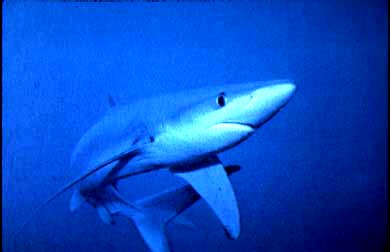
In 1925 an Italian mathematician named Vito Volterra studied the relationship between sharks and their prey in the Adriatic Sea. He devised a mathematical model describing how their numbers change over time. His equations predict that the two populations—sharks and the smaller fish on which they feed—will always vary periodically.
No matter what the numbers of predators and prey are at the start of their relationship, they will tend to return to the same values—the carrying capacity of the two populations— again and again. This can also be seen in the “Lynx and hare” predator/prey population graph on this page. If the hare population shoots up, the lynx population does also, a short time later.
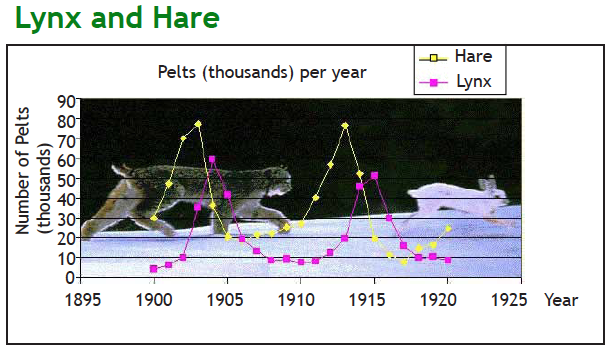
All populations have limiting factors and no population can continue to grow forever. Elephants are very slow reproducers, but if all their young survived they could double their population in a little under 50 years. George G. Simpson and William S. Beck in their book Life estimated that if all the offspring of one elephant pair survived and reproduction of elephants continued for 100,000 years, their mass would fill the visible universe.
Questions to Ponder
1.1 What are limiting factors other than space that might hold down or even reverse the growth of populations? [Make a list.]
1.2 Just as the growth of dogs affected the carrying capacity of goats on Goat Island, the growth of human populations are affecting populations of plants and animals. What are some limiting factors caused by humans that are affecting plants and animals around the world?
1.3 Why are island species so vulnerable to new kinds of organisms?
1.4 What are some limiting factors which might be causing the decline of tortoise and iguana populations?
1.5 What kind of growth would you expect from a newly introduced species which has no enemies?
1.6 What kind of growth would you expect from a newly introduced species with many enemies?
1.7 Which is a more likely scenario—a newly introduced species which has no enemies or a newly introduced species with many enemies?

PG1.2. Investigation: Alien Invaders
- Search the internet for “alien species” or “alien invaders” and list at least five species which have invaded your area of the United States.
- Select one of these and write a page on their success or lack of success in remaining alive.
- Be ready to report on this species to your class.
Questions
1.8 Is it true that only islands are vulnerable to invasion from alien species?
1.9 What can be done to avoid these alien invasions?

